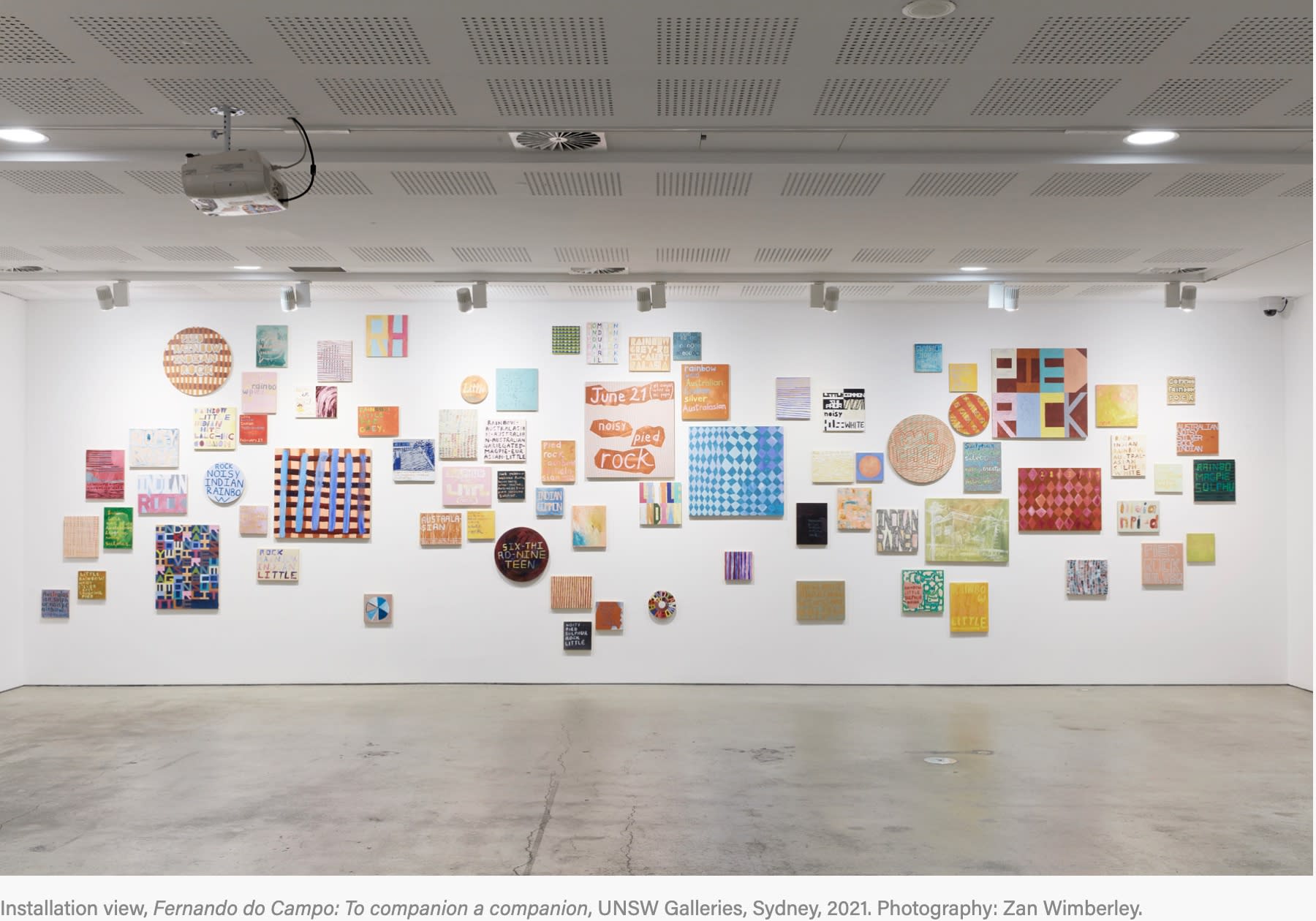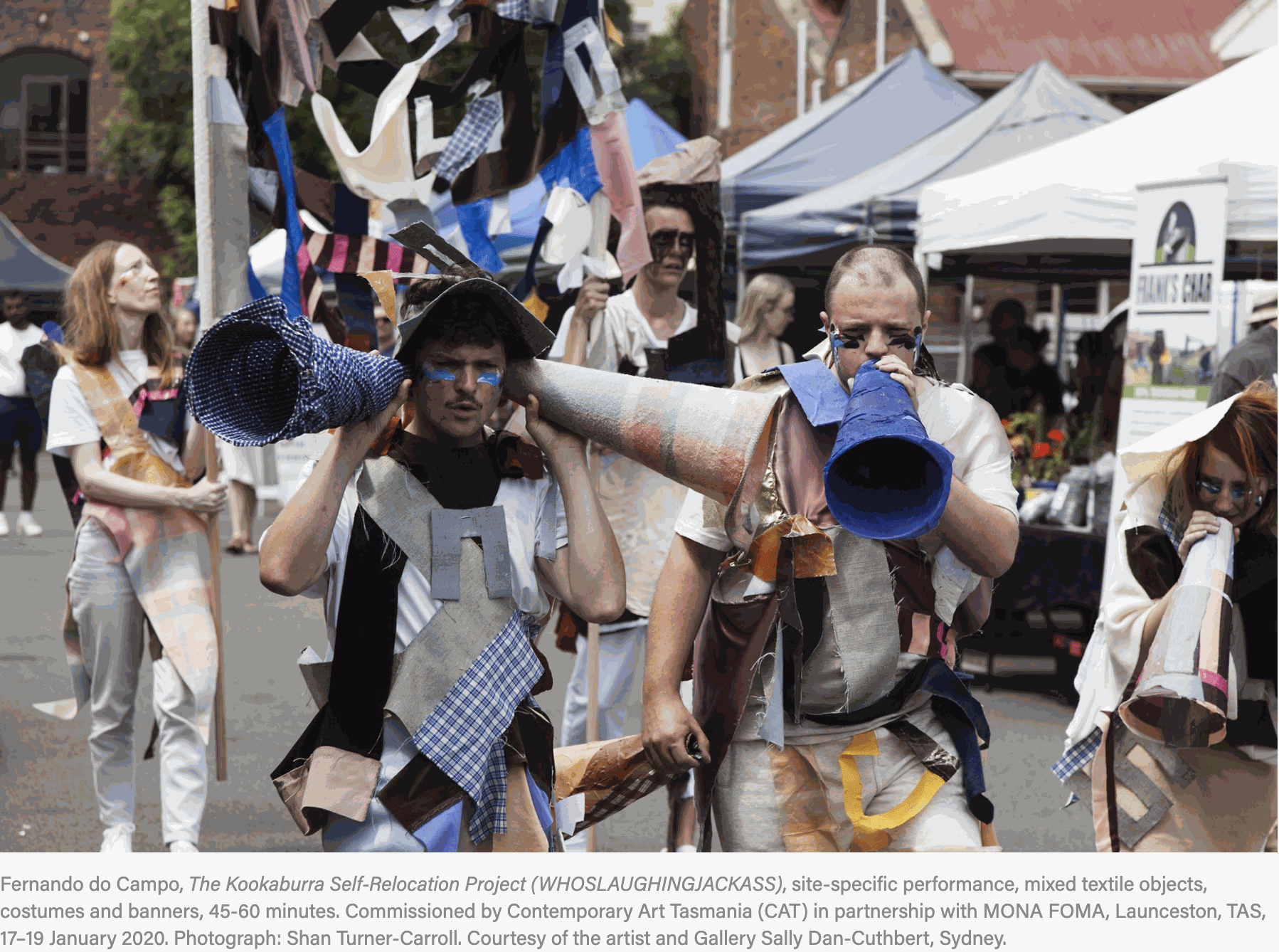When Fernando do Campo was a teenager, he became a wildlife carer. Having just migrated to Queensland from Argentina, he was interested in the animals in this new landscape, and began caring for them on what he thought was a path towards a career as a vet.
“I went to art school just for a year to kill time, because I was going to do a wildlife science degree in Townsville and the degree hadn’t started yet. I never left art school,” the artist, now based in Sydney, laughs.
The interest in animals remains, with birds becoming a primary focus of do Campo’s artistic practice. In 2011, he became a bird watcher while living in Tasmania; in 2014, while living in New York City, he found a profound personal mirror in the act of bird watching.
“I started keeping a daily bird list for the first time, and I realised that in the city every day, I was seeing colonially-introduced species,” he says. “They made me feel at home, and it wasn’t because they were from where I was from, but it was because we both had met each other before in Tasmania and Buenos Aires, and we were both carrying this colonial history.

“That affinity is actually quite messed up—the fact that the bird was still performing in 2014 the exact same asset that the colonisers intended. It was introduced to make the colonisers feel at home in that place, and then I was an Argentinian through Australia who felt at home in another colonial outpost. Leaning into that complication is what I’m really interested in.”
It’s this symbiotic relationship that forms the basis of do Campo’s work: a constant excavation of otherness through the lens of nature. “My work is not really about birds, but about living alongside birds in the everyday, and the complications and histories that that carries,” he says. “It’s about the history carried by animals, and the animals carried by history.”
The practice of making a daily bird list culminates in do Campo’s major work 365 Daily Bird Lists, an archive of every bird he perceived, through both sight and sound, from January 2019 to January 2020. The paintings are often abstract, using text or shapes to document the animals. Even the list-keeping itself rejects the rules of language. “I was only keeping the first word of each species name, so if I saw an Indian myna, a white ibis and a house sparrow, it would be Indian White House,” he says. “I was really interested in interrupting these Western histories of species naming, and playing with something I wasn’t in control of.”
As a gay man, do Campo sees queerness in this disruption of language: “Words start to become queer in a way, because of the idea of ‘companioning’ and this relationship between these histories, and how to lean into being the companion to something that you shouldn’t be a companion to.”
In do Campo’s work, the birds are a springboard rather than the point. Combining research, lived experience and art gives him a unique lens through which to work. “The diaristic daily species list-keeping also translates to a daily material studio practice, which is negotiating lots of different information and lots of things that work or don’t work,” he explains. “The daily bird list is a bit of a crutch in that way, because it lets me make decisions in the studio that I otherwise wouldn’t be making.”

Birds have featured in much of do Campo’s work, including the Kookaburra Self-Relocation Project (WHOSLAUGHINGJACKASS), a roving guerrilla art project that launched at MONA FOMA in 2020. “The work was about using laughter to think about this moment just before Australian Federation where this very alien sound, which humans called laughter, entered the landscape in a way that a colonial gesture operates, and it was reactivated in a nationalistic way,” he explains. “I was playing with that with performance and re-entering public spaces in Launceston in the mornings of the festival, carrying these big banners with this geometric abstraction that I work with, to open up questions about nationalism.”
Different birds have different stories—the house sparrow represents colonialism, the kookaburra represents nationalistic history, and invasive species such as white ibises and seagulls represent the post-Anthropocene. These stories are present all around us. “Those kinds of histories are present all at once when you bump into a mixed flock,” do Campo says.
The artist continues bird-watching as a hobby, but his focus is not on finding new birds. “My work is more about the birds that are around us all the time that we otherwise wouldn’t notice,” he says. “It’s so interesting because the combination of histories and what we’re seeing every day is really, really different.”


